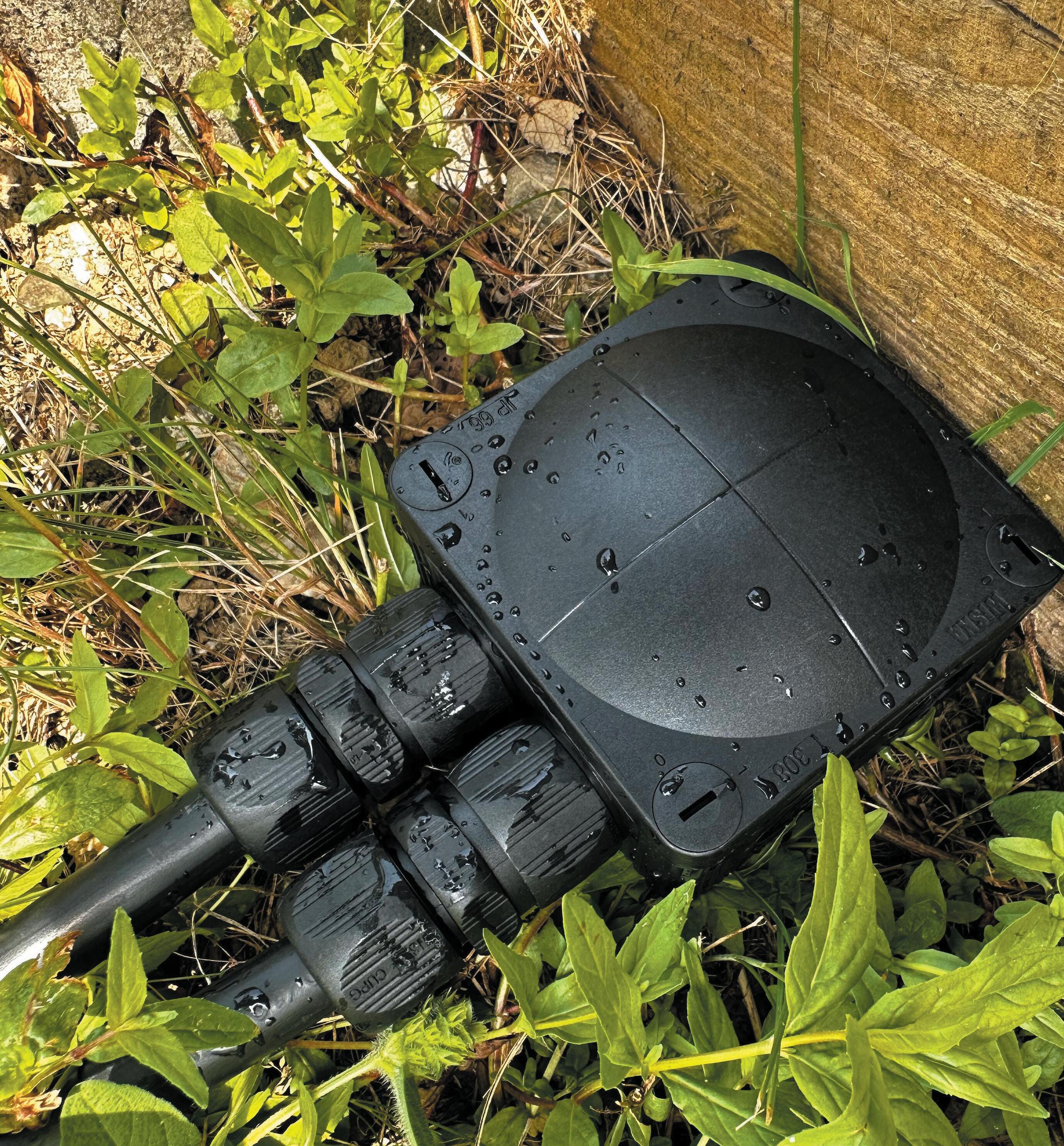





















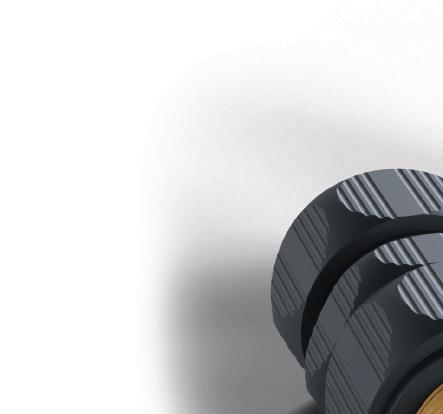



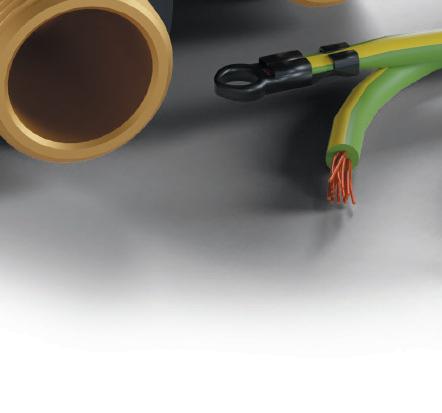

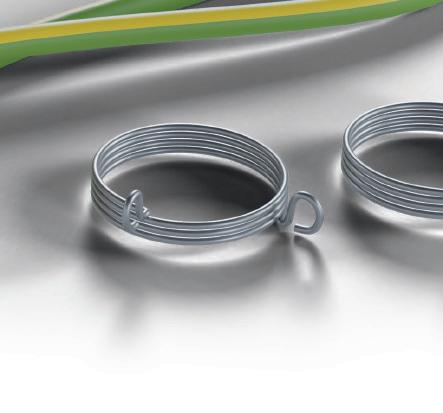






















Doepke UK expands
strengthens




Ultimate

Understanding










Beyond

EDITORIAL
Editor Lisa Peake lisa.peake@purplems.com Tel: 01732 371 579
PRODUCTION
Production designer Lorna Reekie lorna.reekie@purplems.com
Production designer Rob Tremain rob.tremain@purplems.com
with the
ADVERTISING
Sales manager Haydon Rainsford haydon.rainsford@purplems.com Tel: 01732 371 572
MANAGEMENT
Managing director Ed Hunt ed.hunt@purplems.com
© Purple Media Solutions Ltd 2023. All rights reserved. No part of this publication may be reproduced, stored in a retrieval system, or transmitted in any form or by any means electronic, mechanical, photocopying, recording or otherwise without prior permission of the publishers. W&ED is published by Purple Media Solutions Ltd. Registered in England. Registered Number 5949065. Registered Office: The Old School House, St Stephen’s Street, Tonbridge, Kent TN9 2AD, UK, Tel: 01732 371 570.




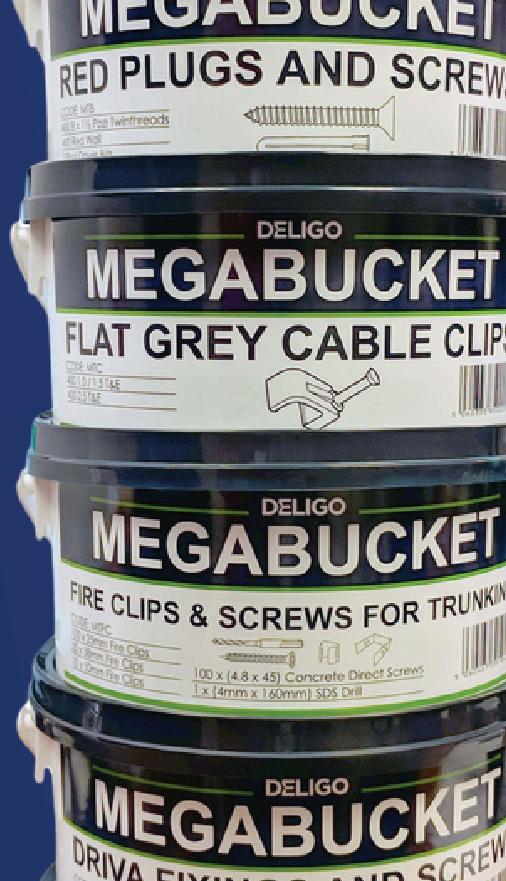



Doepke UK has extended its premises in Daventry, Northamptonshire, to keep pace with growing demand for its reliable circuit protection products. The newly refurbished, larger facility increases capacity, improves logistics, and reinforces Doepke’s commitment to next-day delivery for wholesalers across the UK.
To better support its wholesale partners, Doepke has welcomed three new team members: Helen Longdon, Marketing Executive, driving increased brand visibility and communications. Martin Diggin, Technical Officer, provides expert product advice and practical support to wholesalers and their customers. Ash Chem, Workshop Operative, assisting with order processing and inhouse switchgear assembly to ensure smooth and timely deliveries.
This expansion reflects Doepke UK’s dedication to delivering trusted solutions and outstanding service to wholesalers nationwide.
Pictured left to right is Ash Chem, Martin Diggin and Helen Longdon
The long-promised UK-US tariffs deal could not have come soon enough, says the international delivery expert Parcelhero. However, it warns the limited agreement could prove to be too little, too late for many of the UK’s smaller exporters. New figures show 8.7 per cent of UK manufacturers, 7.7 per cent of retailers and 6.8 per cent of transportation & storage firms exporting to the US experienced a notable drop in demand last month in the face of new tariffs. Some have already quit the US market.
Electrical Times magazine is excited to announce that entries for the Electrical Industry Awards 2025 are now officially open!
Now in its 33rd year, the Electrical Industry Awards celebrate the exceptional achievements of individuals and organisations across the electrical industry. Being a finalist offers invaluable recognition for your hard work, boosts team morale, and highlights your business as an industry leader.

Entering the awards is more than just an accolade—it’s a chance to showcase your innovation, attract new clients, and strengthen your position in the market. But remember, you have to enter to win!
The awards feature a range of categories designed to showcase success across the electrical trade. The categories cover three areas: Products and Services; Projects and Installations; and Contractors and Wholesalers. To submit your entry, simply visit www. electricaltimes.co.uk/electrical-industry-
awards/enter-awards. Once registered, you can upload your entry and any supporting materials at your convenience. You can save your progress at any time and return later if needed.
Whether you’re a seasoned player or a rising star in the industry, this is your chance to demonstrate your achievements and be recognised for the hard work and dedication your team puts into every project.
The awards are judged by a panel of experts, bringing industry knowledge and categoryspecific skill sets to assess every entry. The panel is made up of representatives for each of the major industry organisations, including ECA, JIB, LIA, NAPIT and NICEIC.
Winning an award can significantly raise your company’s profile, making it an invaluable opportunity for businesses aiming to stay ahead in a competitive market.
For detailed information on categories and criteria, a step-by-step guide on how to enter, awards news and more, visit www. electricaltimes.co.uk/electrical-industry-awards
Electrical contractors will play a pivotal role in delivering the UK’s net-zero goals - and the new 2050 Connected Conference is set to put them at the heart of the conversation.
Taking place on July 1–2 at the Royal College of Physicians in London, this first-ofits-kind event, which is hosted by The LIA and BEAMA, will focus on the urgent challenge of decarbonising the built environment.
Bringing together the entire building supply chain, from manufacturers and distributors to specifiers, contractors and end users, the conference offers a platform for tackling the policy, technology and commercial drivers behind a lower-carbon future.
Recognising the essential contribution of contractors, project engineers, and wholesalers in meeting the UK’s climate targets, The LIA and BEAMA have developed a programme that directly addresses the sector’s changing demands. The event will go beyond traditional presentations, creating space for real conversation and delivering practical advice for professionals working on the ground in electrical installations and infrastructure.
This joint initiative from The LIA and BEAMA underscores their shared focus on delivering knowledge-led events that address the

industry’s most pressing challenges. By bringing together the expertise, experience, and insights of two leading associations, the 2050 Connected Conference offers a unique opportunity for professionals across the sector to learn, connect, and act.
Ayca Donaghy, CEO of The LIA said: “At The LIA, we’re committed to supporting electrical contractors, our members, and the wider industry with real opportunities for professional growth. The 2050 Connected Conference is designed to do just that - offering practical insights, clear next steps, and access to key decision-makers from across the supply chain. It’s not just about strategy; it’s about actionable guidance that helps you stay ahead. By partnering with BEAMA, we’re ensuring a joined-up approach that supports contractors right through to the top of the supply chain.”

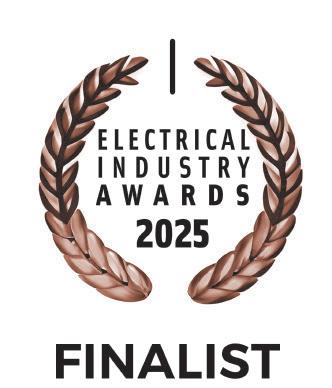

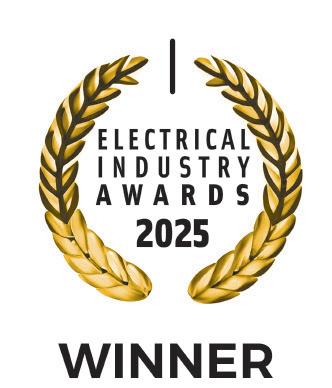
The industry’s largest and most respected event, the Electrical Industry Awards is back.
Brought to you by Electrical Times, the Awardscelebrating its 33rd year - recognise outstanding product innovation as well as individual talents. The winner of each category receives a coveted Electrical Industry Award.
So if you, or your company have something to shout about, these awards will get you noticed.
Some incentives for entry....
Gain independent industry recognition for the excellent work delivered by you, highlighted across the range of categories.
Promote your excellence, demonstrate a competitive edge and position your company alongside the best in the business.
A winners reception in central London with food, drinks, entertainment and completely free of charge!
Being a finalist is proof of excellence in your business and proves to clients new and existing you are in industry innovator.
The award will be judged on the following criteria:
Quality of contribution
Growth - significant, profitable growth in the sector
Innovation - demonstrates an approach that has led to a tangible return
Examples of technological advancements and sustainability
Marketing and product development
Future skills - evidence of a scheme that develops the next generation of wholesalers
MAIN SPONSOR:

SECTION SPONSOR: CATEGORY SPONSORS:


WISKA’ s new ShieldGLAND offers an IP68-rated, easy-fi t alternative to BW/CW glands— enhancing protection, simplifying installs, and preserving COMBI box integrity
For many years now WISKA’s iconic COMBI Junction Box has been used with BW/ CW glands for terminating steel wired armoured cables under the British Standard BS 6121. These glands have a limiting IP rating as standard, require the use of a shroud, and often are used with an earth tag (banjo). The use of the earth tag often results in the integratory of the junction box being damaged to ensure earth continuity.


As a cable gland expert, WISKA have been developing a superior solution for these types of installations. Introducing the ShieldGLAND, an IP68 plastic/brass hybrid cable gland suitable for armoured and SY cables. Available in M20S, M20L, M25 and M32 sizes. Superior protection, easy to use and works seamlessly with our COMBI junction box series.
The ShieldGLAND replaces the use of the conventional BW/CW gland for cable termination. Firstly, the ShieldGLAND offers superior protection, IP68 to be exact which ensures protection against dust, dirt and water. Furthermore, the ShieldGLAND’s plastic outer body eliminates the need for a shroud helping






to save time and improve ease of installation. The ShieldGLAND is also LSF and LSOH making it a safer choice for your installation. Finally, the finished look creates a much cleaner final installation. The ShieldGLAND has also been designed to work with our iconic COMBI junction box series and accessories.
Thanks to its flexible design the ShieldGLAND can be used with armoured, SY, CY and nonarmoured cables.
The ShieldGLAND’s versatile clamping olive can simply be switched to take either armoured or SY, CY making installation quick and easy.
The ShieldGLAND’s unique adaptable insert allows a wider range of cable acceptance than traditional CW type glands due to its two-part sealing gasket. Simply leave as is or remove inner sealing insert depending on your cable requirement.
The ShieldGLAND is available in 4 sizes – M20S, M20L, M25 and M32. These sizes are available in 3 different ranges (or packs) – Standard, Pro and Elite. The Standard range comes complete with 2 x ShieldGLANDs, 2 x locknuts and 2 x earth tag.

The Pro range comes complete with 2 x ShieldGLANDs, 2 x locknuts, 2 x E-SPRING and 2 x earth fly lead.
The Elite range is only available in M20S and comes completes with 1 x black COMBI 308/5, 2 x ShieldGLAND, 2 x locknuts, 2 x E-SPRING and 2 x earth fly lead.
WHAT IS THE E-SPRING?
The E-SPRING is our steel earth continuity spring – simply squeeze the eyelets together to loosen the E-SPRING, place over the ShieldGLAND thread and release to wrap around the gland thread. Due to the E-SPRINGs unique space saving design it can be used in the tightest of spacing for earthing continuity (including the COMBI 308) without compromising IP rating. Simple, easy, and secure, the E-SPRING is available with Pro and Elite ranges.
The ShieldGLAND out now and available from your local electrical wholesaler.
For more information on the ShieldGLAND, stockists or any of WISKA other products head to www.wiska.co.uk or contact WISKA via e-mail info@wiska.co.uk.
WISKA, make power smile.




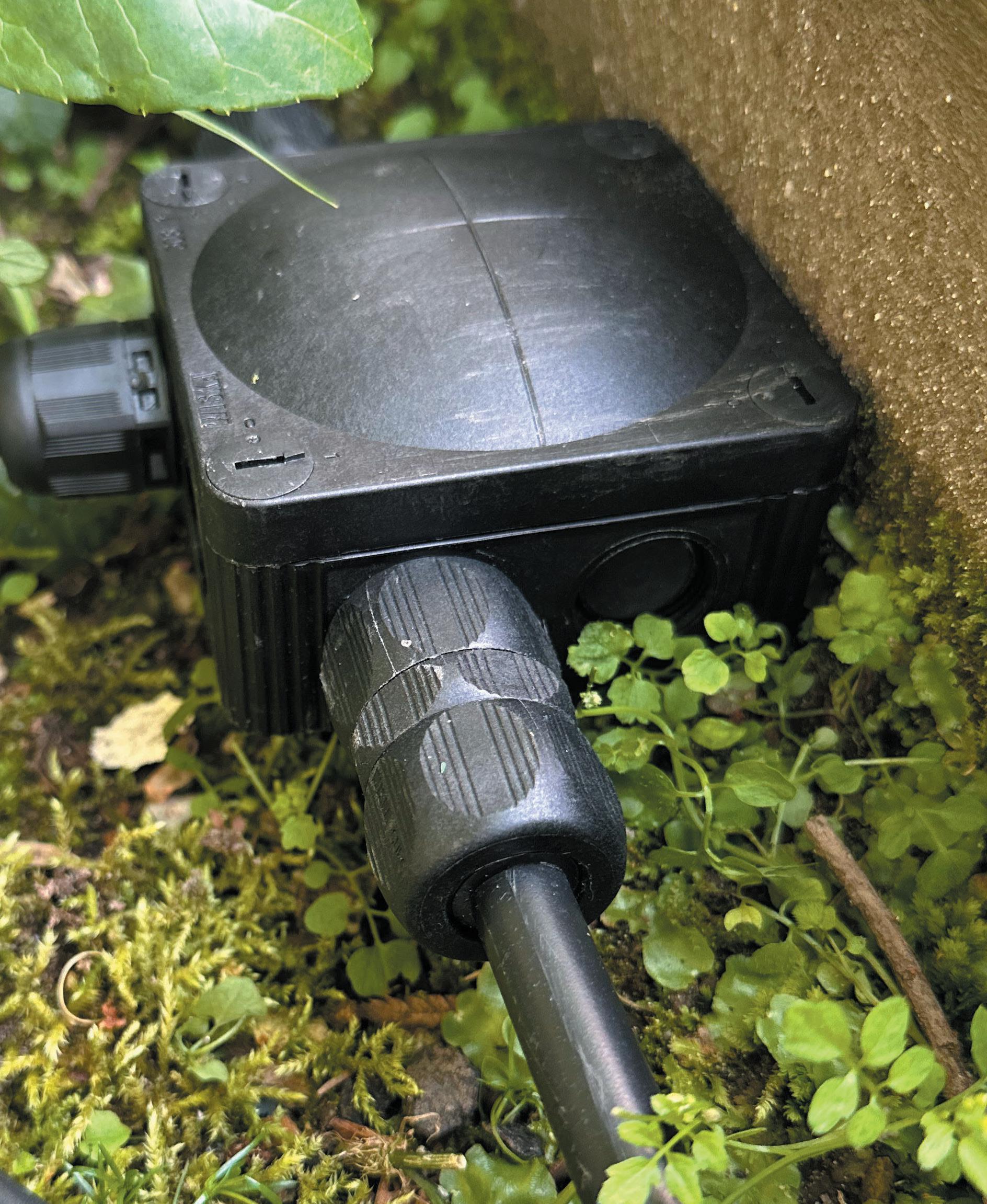












Latest EDA State of the Sector Survey reveals how wholesalers are dealing with rising business costs and the tough decisions needed to mitigate impact
Each quarter wholesaler members of the Electrical Distributors’ Association (EDA) are invited to contribute (anonymously) to the Association’s State of the Sector survey. Each Survey is a mix of core questions, revealing patterns throughout the year, while others vary to address current topics in the supply chain. The EDA has created a Supply Chain Planning Group of senior wholesalers and manufacturers who provide valuable insights that help shape the survey questions.
In Q2 2025 wholesalers responded to issues including latest turnover figures, exploring the fall of the Private Housing RM&I sector, top three business headaches, options for mitigating increasing business costs, and the rise of the contractor social media influencers.
In Q2 2025, 74 companies responded (out of the EDA’s current membership if 257) representing a response rate of 29 per cent per cent. Survey results were shared at the EDA’s Talking Shop Live Online webinar on Friday, May 9, which was attended by over 80 representatives from EDA Member and Affiliate businesses, plus supply chain trade association. In this article we’ve handpicked some highlights to share with you.
BUSINESS HEADACHES: ARE THESE YOUR TOP THREE OPERATIONAL ISSUES?
One of the core questions, wholesalers shared their top three operational challenges from a prompted list, and in our Q2 2025 survey the results showed:
1. Inflation in business overheads and passing these on to customers In equal first place with: Upward pressure on all wages driven by the increases in National Living Wage and National Minimum Wage on overall wage bill
2. Online prices making margins tight
3. Difficulties attracting and recruiting staff
Wholesalers commented:
“I could tick 5 or 6 of these boxes.”
“The negative effect on investment decisions of falling business confidence.”
“Rents, Rates, NI, wage increases have put a huge burden on our business meaning we can’t give the pay rises we normally do or would like.”
RISING COSTS ACROSS THE BOARD MEAN TOUGH DECISIONS
Like many business leaders, EDA Wholesalers Members are grappling with rising business costs and share the tough decisions they are making to manage the impact.
Q: In which areas of your business are you most concerned about inflation and rising costs?

Q: Businesses continue to face increased costs in a number of areas including National Insurance, National Living Wage, Insurance Premiums, fuel costs, energy costs etc. What plans, if any, are you making to reduce the impact of these increases on your business?


Wholesalers also said:
“Buying better as a partnership with other Buying group members.”
“We are analysing and reducing all costs to the business where possible.”
ARE YOU SEEING A DECLINE REVENUE IN THE PRIVATE HOUSING SECTOR?
Each quarter, Wholesalers are asked to rank their best performing sectors. RM&I Private Housing has ranked low in every EDA survey since Q2 2024, but is every wholesaler experiencing the same, and are they diversifying as a result?
Q: If you have experienced a downturn in the traditional Repair, Maintenance and Improvement (RM&I) projects in the Private Housing sector (excluding renewables), please tell us more about how much demand has decreased where 1 is a Small Decrease, 5 a Moderate Decrease, and 10 a Significant Decrease.

This produced an average score of 4, which is a moderate decrease.
Q: Are you planning to diversify into other areas to mitigate the impact of the downturn in RM&I business

lndustries that wholesalers are diverifying into include: Industrial,commercial, heat pumps, renewables, nuclear, HVAC, rail.
LATE PAYMENT, DEBT, AND THE IMPACT OF THE ISG COLLAPSE
Q: In previous surveys, wholesalers reported customers paying later than expected. Did this continue in Q1 2025?
Wholesalers’ comments on this topic included:
“Surprisingly, this is not growing and continues to be about the same per cent of turnover as 2024.”
“Small number of extended payment lead times but generally OK.”
Q: Looking back at 2024, did you experience a rise in bad debt compared to 2023?

Q: Previously, EDA businesses predicted that the worst impact of the ISG collapse would be felt by the UK’s electrotechnical sector in H12025. Have you started to see the impact?

Wholesalers’ comments on the ISG collapse included:
“We have started to see the impact but it was minimal across our customer base.”
“One contractor customer of our failed (immediately) as a result of ISG and one paid slowly (but that has since sorted itself out). No further impact so far.”
“Just one customer affected to date.”
“Have recovered all outstanding debts.”
WHOLESALERS AS SOCIAL MEDIA INFLUENCERS
The Q2 2025 survey included a range of questions about contractorcreated video content, but we also asked wholesalers if they are creating video content for their own social media and this is what they said:



New research from Gophr reveals that just 22 per cent of UK hardware and DIY retailers offer same-day delivery — a shortfall that risks costly delays to time-sensitive construction projects and threatens progress on vital housing targets
New research from Gophr, the lastmile delivery business, reveals that only 22 per cent of UK hardware and DIY retailers offer same-day delivery, significantly impacting projects reliant on immediate material availability and potentially hindering the UK's drive for new housing at pace.
From Click to Fix: The State of UK Trade Delivery conducted by Gophr Trade, Gophr’s specialist delivery service for the construction and DIY industry, audited major trade retailers and independent suppliers. The study found that prominent retailers like Crown Decorating Centres, CEF and Sydenhams primarily offer next-day delivery rather than same-day options, potentially resulting in lost revenue and project delays.
With one in four construction projects delivered more than 250 days late, and the government pushing for increased new housing starts, efficient supply chains are crucial to ensure financial losses and waiting times for materials are kept to a minimum. The findings from From Click to Fix: The State of UK Trade Delivery, suggests that there is still work to be done.
The report also highlighted a disparity between independent and non-independent businesses. 51 per cent of independent businesses offer same or next-day delivery compared to 57 per cent of non-independent businesses. Independent businesses are more likely to handle deliveries themselves (72 per cent) than group-owned retailers (51 per cent).
Delivery costs vary, averaging £19, with some reaching £30 for large orders. Businesses using delivery partners (39 per cent) often achieve lower costs (£17), reflecting optimised routing and efficiency.
Painting and decorating suppliers lead in same-day delivery, while building and construction retailers are still primarily offering two-day delivery.
Graham Smith, Strategic Account Director at Gophr, commented: “While many hardware and DIY retailers have improved delivery

efficiency, the lack of same-day options represents a missed revenue opportunity, especially given the time-critical nature of projects and the importance of meeting national housing targets.
“Implementing same-day delivery is often simpler than perceived. Existing branch networks for multi-store retailers, already supporting next-day delivery and click-andcollect, facilitate a straightforward transition.
“Same-day delivery offers significant value in the hardware and DIY sector. Projects often rely on just-in-time schedules, where even minor delays can impact profitability."
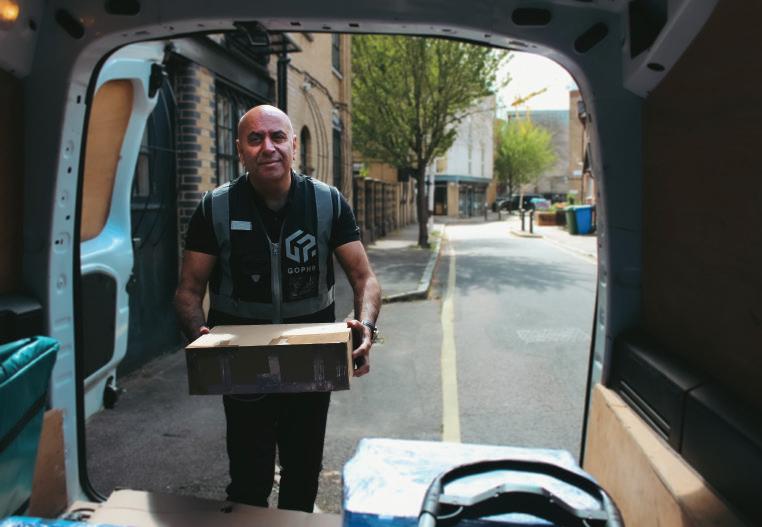
The full report is available here: https:// uk.gophr.com/trade-delivery-report-2025
“Implementing same-day delivery is often simpler than perceived. Existing branch networks for multi-store retailers, already supporting next-day delivery and click-and-collect, facilitate a straightforward transition. Same-day delivery offers significant value in the hardware and DIY sector. Construction projects often rely on just-intime schedules, where even minor delays can impact profitability.”


se.com/uk
In recent years, many retailers have had to adapt to the rapidly changing distribution landscape. Among the different phrases and buzzwords that have become relevant is“omnichannel distribution.” Omnichannel distribution is how a company is able to treat its inventory as fully available (regardless of the channel) from any of its warehouses or physical locations. This flexibility allows for the distribution of products through multiple avenues (ecommerce, wholesale, store replenishment, returns, etc.) without the need for disparate specialised fulfillment facilities or workforces. Any one of a corporation’s retail locations should have the ability to respond to such needs.
As Bob Trebilcock points out in his article on Supply Chain Management Review, software remains key to this focus on supply chains. A company’s tech stack is what defines its ability to meet new consumer challenges and demands in the 21st century. Given the importance of the tech stack, it’s crucial that companies select or develop software that delivers the visibility, versatility, and stability needed to handle and respond to demand in real time.
With these new norms set in place, it’s hardly surprising that not just retailers, but also WMS or ERP systems are scrambling to incorporate modules that afford such functionality in order to carve out a share in today’s omnichannelreliant industry. Here’s a closer look at the three characteristics listed above — visibility, versatility and stability — and their importance in omnichannel distribution.
Visibility is paramount to the successful implementation of an omnichannel strategy. Reliable shipment tracking allows you to provide greater visibility to your customers, enhancing their experience, as well as to access greater internal insight into inventory movements. Without this, gaining the right amount of visibility will be impossible. Failure to properly track shipments can also lead to both internal and external complications: a lack of supply chain visibility prevents quick responses to delays or internal auditing, while also potentially damaging the customer relationship if status updates are vague, incorrect or out of date.
Gabriel Chan

The ability to adapt to different consumer and supply chain requirements is essential to an effective omnichannel strategy. Thus, carrier diversity is vital. At ShipEngine, we have worked with companies that realied they were losing millions each year in potential rate savings by relying on a single carrier.
In addition, the rise of what is commonly referred to as the “Amazon effect” has led to a different kind of customer expectation in today’s ecommerce distribution industry. Customers have become accustomed to almost instantaneous fulfillment, and companies that are unable to provide the same level of service often find themselves losing market share. Carrier diversity helps rectify this issue by allowing for the efficient selection of the fastest delivery option.
Given the importance of software in today’s ecommerce distribution landscape, it stands to reason that the software itself cannot fail under heavy volume. Anything less than a 99.99 per cent uptime could equate to thousands of dollars lost if your software fails — especially for larger enterprises. Put into perspective, 0.01
per cent of downtime a year translates to a full hour of downtime for a supply chain network. If this were to happen on a high-volume day like Black Friday or Cyber Monday, a company could be looking at a catastrophic disaster. Software interfaces can range from simple label generation tools to complex logistical management systems, but the cores of all systems remain singularly reliant on how well they connect to the API endpoints offered by each carrier. The number of features any software offers will matter little if that it is unable to communicate effectively with the source of truth that powers every move it makes.
As one of the world’s largest carrier API libraries that also powers enterprises like Facebook, SPS Commerce, and 3PL Central, ShipEngine is the be-all and end-all of shipping API solutions. With 100-plus carrier integrations planned for 2021 and the capability to process billions of shipments a year, ShipEngine provides ecommerce brands and platforms with the ability to fuel their omnichannel implementation efforts.
Visit shipengine.com to learn more about revolutionising your supply chain operations.

More than 40 per cent of warehouse workers say their mental health has suffered due to their role, according to The Warehouse Workers Mental Health Report by StoreFeeder .
However, the study also found that technology—including barcode scanning and despatch processes, is having a signifi cant positive impact on wellbeing across the sector
Astudy from leading warehouse management system software provider StoreFeeder has found that technology is improving the mental health of over 50 per cent of people working in warehouses.
The study found that technology such as barcode scan and despatch processes, automated reporting and PDA picking are having a significant impact on the mental health of those using them, in an industry where 42 per cent believe that their mental health has suffered as a result of their role.
According to the report, which surveyed 500 warehouse workers across the country, 56 per cent of workers believe that the introduction of technology into the warehouse has improved their mental health, with many different implementations already having a significant impact.
Typically, larger warehouses are more likely to have technology implemented and, as a result, the more positive impact is being had on the mental health of staff of all seniority levels.
Barcode scan despatch processes are having the biggest impact on staff overall, improving the mental health of half of workers,
while automated reporting and access to technical support (both 42.5 per cent) are also high on the list of implementations aiding warehouse workers.
That’s especially the case for those at entry level, although overall technology has the biggest impact on those that use it more frequently. For example, while intelligent routing improves the mental health of 40 per cent of workers overall, that rises to 60 per cent of
“ StoreFeeder’s warehouse management system (WMS) emerges as a powerful tool to address these concerns. By streamlining operations, improving workflow efficiency, and integrating technology to reduce manual strain.”


those at entry level, i.e. the workers on the warehouse floor utilising the tech.
At junior and middle management level, mental health is particularly boosted by easy access to reports, while at senior professional level the biggest impact of mental health tends to be around the technologies that allow workers to operate more efficiently, such as barcode scan and despatch processes.
Ian Dade, Operations Manager at StoreFeeder said: “The Warehouse Workers Mental Health Report 2025 highlights the pressing mental health challenges faced by warehouse workers, particularly during peak seasons and in larger operations. These challenges—driven by delivery time pressures, lack of managerial support, and inadequate workplace measures—underscore the need for innovative solutions.
“StoreFeeder’s warehouse management system (WMS) emerges as a powerful tool to address these concerns. By streamlining operations, improving workflow efficiency, and integrating technology to reduce manual strain.
View the full Warehouse Workers Mental Health Report 2025 at: https://storefeeder.com/blogs/ the-warehouse-workers-mental-health-report-2025


This article explores how and when to use Type 3 SPDs, what information is needed to select the right device, and why their proximity to equipment can make all the difference

When we consider SPDs, usually we are considering protecting a whole building or a distribution board from the effects of lightning or overvoltages. These SPDs are our Type 1 and Type 2 devices, which are designed to be installed inside or next to the distribution board that they are protecting. But, what if you are only interested in protecting a piece of equipment you are installing, or want to protect equipment that has been damaged previously? This is where we enter the world of Type 3 Surge protection devices.
Unlike Type 1 and 2 SPDs, Type 3 SPDs are designed to be installed within or next to the equipment that they are protecting. This means that they provide an increased level of protection in comparison to having an SPD within the distribution board, which may be located a distance upstream.
The further away the SPD is from the equipment, the lower the protection level provided. So, Type 3 SPDs are how we get the best possible protection level for sensitive equipment.
As Type 3 devices are designed to protect equipment, there are many different variations, for example, an SPD designed to protect a Cat 6 cable, will be different to an SPD designed to protect a fused spur. Not only do these devices look different, but they also have different technical data, different configurations and quite often different installation requirements.
The information we usually ask for when selecting an SPD would be assessing if the building is at risk

of direct lightning effects, by asking if the building has an external lightning protection system or an overhead supply, then we would need to know if the distribution board is single phase or three phase, that information will then allow us to select the required SPD for the installation.
When selecting a Type 3 device, we will need more comprehensive information, such as what the equipment is that requires protection, as discussed above, this will have an impact on what device is required. We will also need information on how far away from the distribution board the equipment located, this will be able to give us an idea of the protection level that will be needed, sometimes this can mean that we recommend a Type 2&3 combined device be installed locally to the equipment, such as from an isolator, to provide this level of protection. We may also ask for additional information, such as if the equipment is running on a specific voltage or needs additional consideration, such as bandwidth requirements on POE cables.
We have many different variations of Type 3 devices, which will provide protection for any equipment that would require an SPD, starting from protection at from just 6V, so please get in touch if you or your customers, require any advice on the selection please get in touch.
We hope this has been useful to you, if you wish to discuss this further, or for further information on the use of surge protection devices contact the surge protection experts on 01484 851747, or email us at info@surgedevices.co.uk.
"The information we usually ask for when selecting an SPD would be assessing if the building is at risk of direct lightning effects, by asking if the building has an external lightning protection system or an overhead supply, then we would need to know if the distribution board is single phase or three phase, that information will then allow us to select the required SPD for the installation. ”

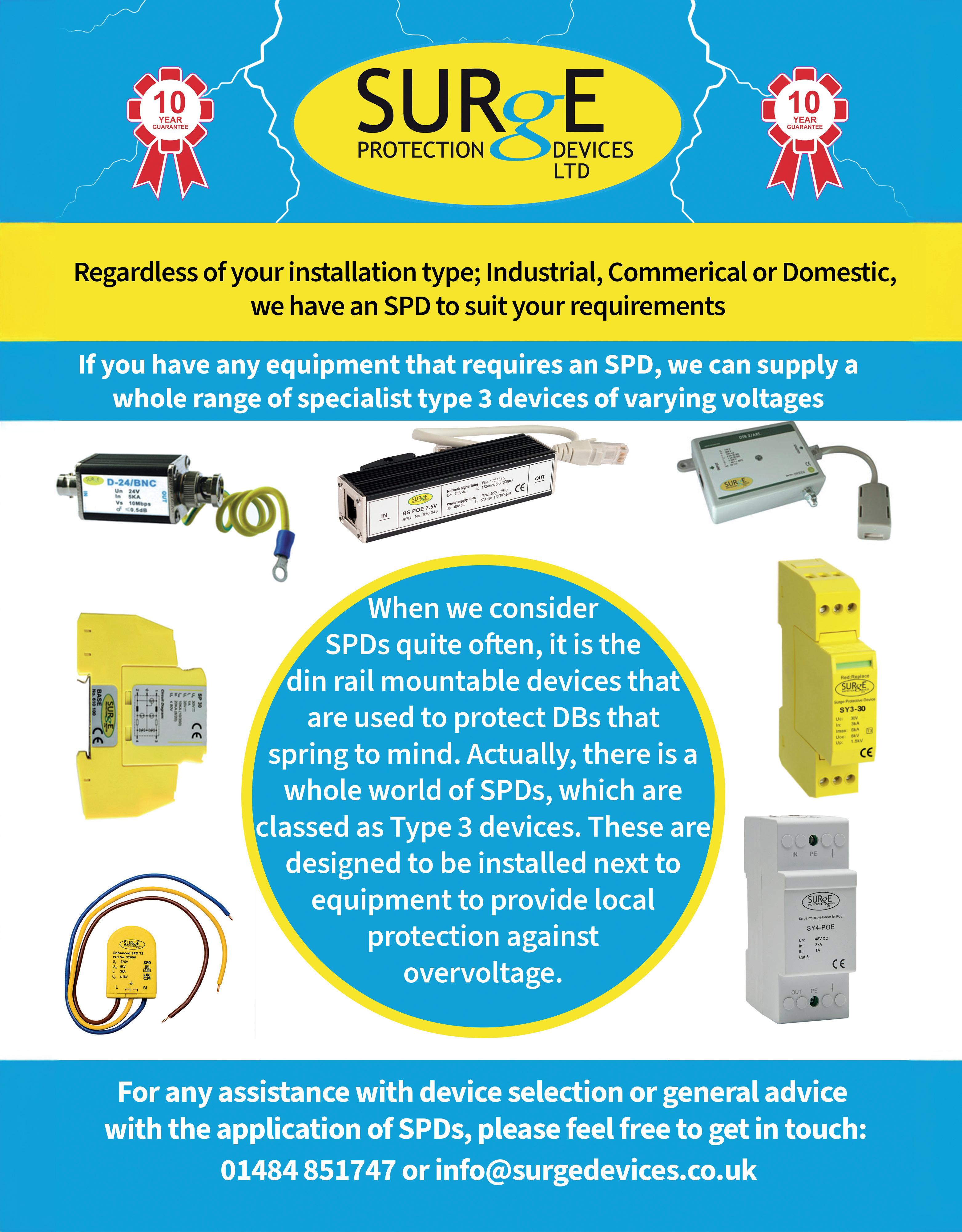





SBy David Williams , Schneider Electric ’s VP of Transactional Business, UK&I
ustainability is fast becoming a business imperative, with 60 per cent of Fortune 500 companies currently having a publicly stated climate goal and investors increasingly targeting companies with robust ESG practices.
The electrical industry is at the helm of the battle against climate change, as the world enters the era of Electricity 4.0. Digital and electric technologies are now being combined across the world at scale. In the face of such rapid change, what are the steps businesses can take to improve their existing electrical infrastructure and methods for distribution, to operate in more sustainable ways?
ENSURING COMPLIANCE WITH STRINGENT SUSTAINABILITY STANDARDS
Organisations aren’t only under pressure to improve their environmental initiatives from a reputational standpoint. Compliance with sustainability audits and the ability to set, meet, and openly report on ambitious goals is fast becoming non-negotiable. Failing to provide transparent information into progress towards sustainability targets can even result in fines and reputational harm, thanks to legislation like the UK’s 2021 Environment Act.
for greener operations in order to meet ever-evolving sustainability targets. Adopting innovative solutions like Schneider Electric’s Acti9 Active, which is changing industry standards for electrical sustainability, is necessary to achieve this. Acti9 Active is a digitally improved, completely connected system that offers total visibility and control over infrastructure, marking a breakthrough in safety and connection for electrical distribution. Leaders can obtain important data insights to support well-informed and successful sustainability plans using Acti9 Active’s sophisticated connectivity. This data will be crucial for integrating low-carbon technology, connected electric heating, and new energy sources as global electrification picks up speed. Supporting EV charging infrastructure is a crucial use case for Acti9 Active, which makes load balancing possible to maximise energy efficiency and distribution.
"The electrical industry is at the helm of the battle against
Businesses must prioritise upgrading their electrical infrastructure as part of their sustainability strategy in order to comply with increasingly complex and demanding legal requirements. The climate problem is essentially an energy one. Investing in smart infrastructure has major financial advantages in addition to improving sustainability and energy monitoring initiatives. Smarter, more sustainable operations generate economic and environmental benefits by reducing energy costs, minimising downtime, discovering efficiency improvements, and enabling on-site renewable energy generation.
Businesses must prioritise energy efficiency, cutting waste and improving performance
Acti9 Active is designed to help companies achieve their sustainability objectives by improving energy efficiency. Its sophisticated features minimise energy waste and maximise efficiency, thereby lowering carbon footprints. The system also makes predictive maintenance possible, offering comprehensive information about errors and their underlying causes. This proactive strategy ensures a more resilient and sustainable operation by reducing downtime and the environmental effect of reactive maintenance.
The UK is projected to require an additional 22,900 electricians by 2032 to meet rising demand. Indeed, skilled professionals will
form the cornerstone for a safe, efficient, and sustainable transition to a more electrified and sustainable planet. Thankfully, organisations are taking steps to address this burgeoning skills gap. Across physical academies and digital campuses, programmes are now available to equip electricians with deep knowledge of the latest technologies such as automation and energy management, as well as safety regulations. With deep industry training programmes in place, contractors and electricians will be well-placed to spearhead sustainable transformation and introduce new benchmarks for the industry as a whole. Contractors can easily achieve compliance with recent industry rules and legislation through products such as Acti9 Active, which support companies to maintain the highest standards of operational integrity, sustainability, and safety. Acti9 Active is the only system that provides cutting-edge connection for proactive remote monitoring to safeguard electricians and limit callouts to emergencies or high-risk scenarios including wiring and configurations. This provides engineers with instant insights on whether all of the current circuits are required. Not only does this process drive up energy efficiency; it also minimises environmental impact as a result.
Into the future, businesses must ensure that their electrical infrastructure moves with the times to deliver on ambitious sustainability targets. By leveraging cutting-edge solutions, such as Acti9 Active, it’s now far easier for organisations to efficiently create, accomplish, and report back on sustainability benchmarks. Technologies that drive transparency and realtime visibility across electrical networks must form a crucial part of the net-zero puzzle. These tools will also play an increasingly fundamental role for organisations seeking to achieve compliance with demanding sustainability legislation. Business can no longer place electrical innovation on the backburner: it will play a leading role, driving long-term success in the sector as the world continues to unite digital and electric technologies at scale.

Deligo explain why plastic still makes environmental sense, citing lower energy use, reduced transport impact, and better protection
Here at Deligo we’ve made a conscious decision to continue to provide our ever-popular range of Megabuckets supplied in polypropylene (pp) plastic tubs and we’d like to share with you a few reasons why, to be sure you’re always making the right choice. It is often a misconception that paper packaging is more environmentally friendly than plastic alternatives, and by looking deeper into the manufacturing and transportation processes of both paper and plastic options we firmly believe that plastic is the right material for the job.
The process of manufacturing paper tubs uses 3.4 times the amount of energy required to produce plastic containers, and the production of paper is also extremely water intensive, up to 71.2 gallons (324 litres) of water is needed to make just one kilogram of paper.
As plastic tubs are lighter, more durable and stackable when unfilled they also save up to




25 times the volume during transportation – we source our material from the UK further saving transport miles and carbon emissions whereas paper alternatives are generally sourced from the far east, adding both shipping emissions and inward transport to its footprint.
Paper is also highly prone to moisture damage and damp ingress meaning the integrity of the fasteners packed inside are at high risk of corrosion, especially when stored on site or in vehicles.
Plastics offer the best solution to keep your products in top condition, ensuring the integrity of your fastener is never in doubt - regardless of season and length of storage.
And by no means least, our Megabucket tubs are not only 100 per cent recyclable they’re purposely designed to be stackable, and re-usable – eliminating the single use scenario, so whether you’re refilling the tub with fasteners, need a caddy to “knock up” a bit of compound or just fancy a bowl of cornflakes on site – we’ve



got you covered. Yes, they’re plastic, but there’s nothing artificial about their green credentials. We hope this goes some way in explaining the environmental benefits of using plastic tubs over paper alternatives, While Deligo is committed to a sustainable future, we must also recognise the false economy of not looking at the bigger picture, and we will not commit to false eco-marketing and greenwashing at the expense of our loyal customers.
www.deligo.co.uk/Products/megabuckets
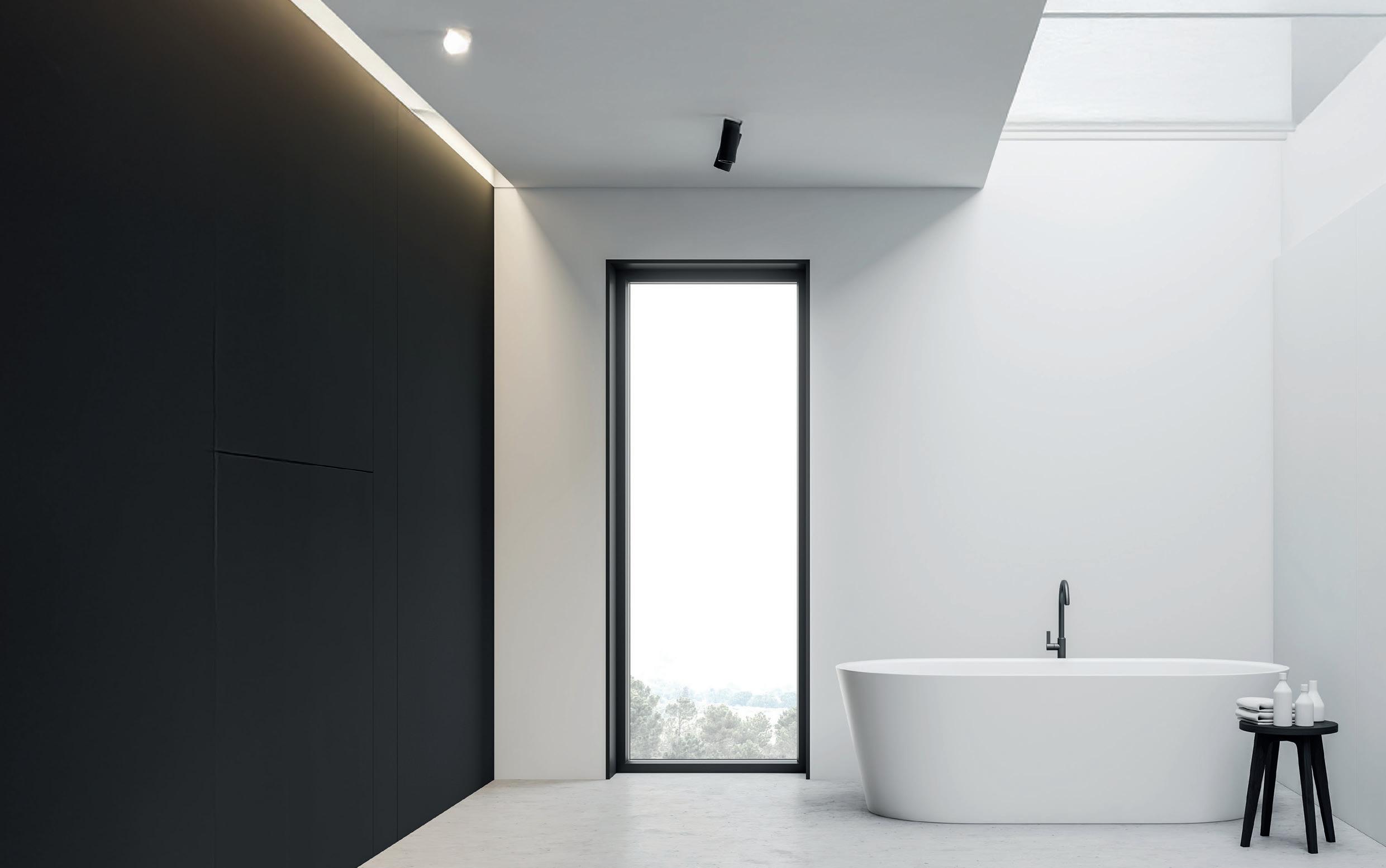

Outdoor lighting remains a key category year-round. Presenting strong opportunities for revenue growth, it can offer retailers a way to boost footfall and add value for customers.
With summer projects now in full swing, we spoke to Chris Anderson , Technical Manager at Ansell Lighting , about how to curate a comprehensive and commercially appealing range supported by the latest technologies and practical sales guidance
Outdoor lighting is a rapidly growing market, valued at approximately £417 million in 2023, according to Grand View Research. With demand on the rise, it’s projected to nearly double in size— reaching an estimated £803 million by 2030.
As businesses and consumers focus on modernising existing installations, adopting new technologies, and seek solutions for new building projects, outdoor lighting offers wholesalers and electrical distributors real opportunities for growth and profitability. But to maximise this opportunity, it’s essential to offer a comprehensive range that meets a broad range of requirements and caters to the full spectrum of outdoor applications.
To do this, understanding the needs of the customer base is key. Assess the types of projects customers are working on and review current product offerings to identify what’s selling and what’s underperforming. Let facts and existing insight guide decisions and pay attention to local trends. If there is a lot of residential building work in your region, consider expanding the range of domestic focussed products. Conversely, if there are more commercial builds taking place, focus on robust lighting solutions that meet those needs, such as high-output floodlights for large delivery yards or column and street lighting for car parks and access roads.
It is important to offer depth within your range as well as breadth. Electrical contractors need to cater to different specifications and budgets. That means offering a choice of finishes, designs and control options. A range that balances aesthetic appeal, practical performance and cost-effectiveness will not only meet your customers’ expectations but also encourage repeat business.

By aligning your outdoor lighting offer with the real demands of your market—whether that’s a private garden renovation or a largescale commercial development—you’ll be in a strong position to drive sales and support your customers through peak project season and beyond.
To ensure your range truly meets demand, consider which types of products best suit each environment. Wall lights are ideal for illuminating entranceways, patios and boundaries, while spike or in-ground fittings can enhance pathways and planted areas. Bollard lighting too is ideal for footpaths and driveways whilst floodlights are essential for
larger external areas such as yards, loading bays or large gardens. Decorative options like festoon or string lights are also hugely popular in both residential and hospitality settings, helping to create ambience and define spaces for socialising and entertaining. Product quality is a critical consideration, with performance and durability key factors. Products produced from die-cast aluminium, polycarbonate or with stainless-steel casings will offer the best performance against the elements for a longer lifespan.
With end-users increasingly prioritising energy efficiency and convenience, technology now plays a central role in modern outdoor lighting

installations. Smart technology is the number one option. Allowing users to create bespoke lighting schemes precisely programmed and automated to meet their needs and preferences, it allows for an unparalleled level of customisation and control. Microwave and PIR sensors are also in high demand. By activating lights only when movement is detected, they help to save energy whilst providing instant visibility when required.
Solar powered products are another vital growth area. Advancements in technology mean the performance of solar powered lighting products has improved vastly in recent years offering greater brightness, reliability and charging efficiency. They are are great ecofriendly option and an ideal solution for those concerned with escalating energy bills.
Avoiding light pollution is also a major consideration for installers. To make it easier for customers, stock a wide range of fittings that hold the DarkSky Fixture Seal of Approval accreditation. This recognises products that feature advanced lens technology and enhanced glare control helping to prevent light pollution being created.
When it comes to selling outdoor lighting effectively, it is important wholesalers and distributors ensure their sales teams are well

equipped to support customers to choose the right solutions. They should be able to talk confidently about product performance and energy efficiency and have the ability to offer clear technical information and installation guidance when needed.
Done well, outdoor lighting can offer wholesalers and distributors a very lucrative
Scolmore has launched the Elucian Three Phase Distribution Board collection, comprising seven distribution boards – 4, 6, 8, 12,16, 20 and 24 Way.
Key features include:
• 4 and 6 Way boards
• 8, 12, 16, 20, and 24-way boards
• Device Alignment
• Quick Release Doors
• SPD Installation

The Circuit Protection Devices are designed to populate the Three phase distribution boards and extension boxes.The move into three phase calls for larger sized devices (3/4 Pole), higher rated / breaking capacity devices (10kA), and D Curve devices. These devices are ideal for safeguarding complex electrical systems while ensuring seamless operation and compliance:
• Mains isolator switches – 3 and 4 pole 125A and 250A.
• Residual Current Circuit Breaker (RCCB) – Type A and B.
• Surge Protection Device (SPD) – Type 1 and 2 and Type 2.
• Arc Fault Detection Device (AFDD) - available in B and C curves (AFDD+MCB in B Curve only).
• Miniature Circuit Breaker (MCB) – 1 and 3 pole B, C and D Curve (6A to 63A).
• Residual Current Circuit Breaker with Overcurrent Protection (RCBO) –available in B and C Curve.
• Three Phase Multi-Function Energy Meter Kit – designed for seamless integration into all the distribution boards. Supplied as a complete kit.
• Blanks - Single and Three Way Din Rail Blank Module with 125A and 250A adaptors.
All Elucian distribution boards undergo rigorous testing to meet and exceed BS EN 61439-3 standards and compliance with BS 7671. www.elucianuk.com

revenue stream. By giving real thought to local demand, providing trusted advice and stocking a well-rounded range, wholesalers can position themselves as go-to suppliers in this fast-growing and increasingly sophisticated sector.
For more information on Ansell Lighting, visit: https://ansell-lighting.com/en
Click Scolmore is pleased to announce the addition of a striking matt black finish to the range.

Joining the existing ‘Polar White’ and ‘Metal Clad Grey’ finishes, the new ‘Matt Black’ variant combines durability with modern aesthetics.The entire range features a contemporary curved profile with matching surface boxes for a clean, precise fit.The full range comprises switches, socket outlets, modular plates, fused connection units, as well as surface and blank boxes, making it an ideal choice.
Crafted with the demands of today’s installations in mind, the Matt Black Metal Clad Pro builds on the range’s reputation for robustness and versatility, providing installers and designers with a contemporary Matt Black finish that complements modern styles.The modular construction also allows for easy modifications and custom switching solutions, ensuring total flexibility on-site.
All Metal Clad Pro products are packed with features.These include:
• Contemporary curved profile with matching back box profile.
• LED Indicator located on the rocker switch.
• Ingot-Style Socket Pins
• New Insert Shapes for all FCUs and 20A switches.
• 3 Pin Safety Shutters.
• Customisable Configurations
The Metal Clad Pro products feature electrophoretically coated plates and matching back boxes, to withstand even the toughest environments. Proudly part of Click Scolmore’s Kitemark Licence, they are backed by a 20-year warranty, and meet BS 1363 safety standards
Watch the video here – https://youtu.be/wcRjR8lVTIw www.scolmore.com
Product sustainability has become a critical focus in the lighting industry, driven by evolving regulations and increasing customer expectations in the built environment. Manufacturers are now tasked with demonstrating their environmental responsibility through various metrics and standards. Understanding these frameworks, TM66, TM65, Life Cycle Assessments (LCAs), and Environmental Product Declarations (EPDs), is essential for navigating the path toward sustainable lighting solutions.
TM66: ASSESSING CIRCULARITY IN LIGHTING PRODUCTS
Developed by the Society of Light and Lighting (SLL), TM66 provides a framework for evaluating how well lighting products adhere to circular economy principles. It assigns a score from 0 to 4, reflecting a product’s design for disassembly, use of recycled materials, and potential for remanufacturing.
Advantages:
• Offers a quick and cost-effective assessment method.
• Encourages manufacturers to consider product life cycle in design.
Limitations:
• Mostly relevant to the UK market Self-certified.
• A single score may oversimplify complex environmental impacts.
While TM66 serves as a valuable starting point, it should be complemented with more comprehensive assessments for a complete sustainability profile.
TM65.2: CALCULATING EMBODIED CARBON IN LIGHTING
TM65.2 focuses on estimating the embodied carbon of lighting products—the emissions associated with raw materials, manufacturing, transportation, and end-of-life processes. As the UK grid becomes greener, operational carbon footprints decrease, making embodied

carbon a more significant factor in a product’s environmental impact.
Advantages:
• Provides a straightforward calculation using representative conversion factors.
• Facilitates comparison between products based on embodied carbon.
• Utilises real data on materials and component masses.
Limitations:
• Mostly relevant to the UK market.
• Self-certified.
• Focuses solely on carbon, omitting other environmental factors.
• Offers a high-level approximation rather than precise measurements.
TM65 serves as an accessible entry point for companies beginning to assess their environmental impact at the product level but should be supplemented with more detailed analyses as sustainability expectations evolve.
LCA: COMPREHENSIVE ENVIRONMENTAL ANALYSIS
A Life Cycle Assessment (LCA) provides an in-depth evaluation of a product’s potential

environmental impact throughout its entire lifecycle, from raw material extraction to disposal. Unlike TM65.2, which focuses on carbon emissions, a LCA encompasses multiple impact categories, including water usage, pollution, and resource depletion.
Advantages:
• Delivers a holistic view of environmental impacts.
• Based on real-world, evidence-based data.
• Recognised internationally, facilitating global applicability.
Limitations:
• Self-certified.
LCAs are considered the most thorough method for assessing a product’s environmental footprint, making them essential for companies committed to sustainability.
EPDS: VERIFIED SUSTAINABILITY REPORTING
An Environmental Product Declaration (EPD) is a standardised document that is used to communicate the environmental profile of a product, as calculated using LCA. EPDs are

verified by a third party to ensure accuracy and compliance with international standards, and are increasingly used across industries.
Advantages:
• Provides transparent, comparable data on environmental impacts.
• Enhances credibility through third-party verification.
• Aligns with potential future regulatory requirements in the construction sector.
• Internationally recognised
Limitations:
• Higher cost due to third-party verification
• Standards can vary by geography.
• Data-heavy to the untrained eye.
EPDs offer a reliable way for companies to communicate their products’ environmental performance, aiding in informed decisionmaking for specifiers and buyers.
The adoption of TM66 and TM65 has propelled the lighting industry toward greater sustainability, fostering an understanding of life-cycle thinking in product design. While these frameworks offer accessible starting points, the detailed insights provided by LCAs and EPDs are becoming increasingly important, especially at the specification stage.
To facilitate this transition, platforms like One Click LCA have emerged, streamlining the process of conducting LCAs and generating EPDs. These tools make comprehensive environmental assessments more accessible to manufacturers, enabling them to meet the growing demand for transparency in product sustainability.
In summary, as the lighting industry continues to prioritise sustainability, understanding and implementing frameworks like TM66, TM65, LCAs, and EPDs are vital. These tools not only help manufacturers assess and improve the

environmental impact of their products but also provide transparent, credible information to specifiers and buyers, facilitating informed choices in the marketplace.






















































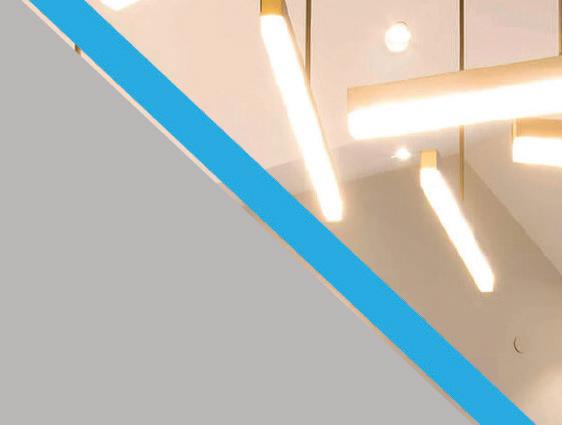














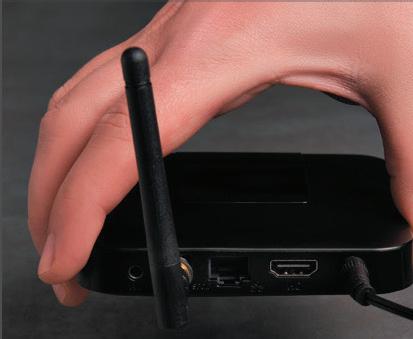









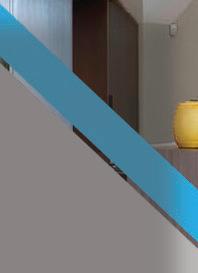







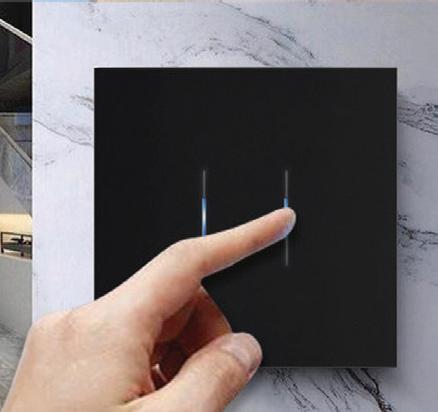








Martin Wilson , North EMEA Regional Director at Resideo ,
explores the key concerns identified by homeowners in a recent survey, what these fi ndings mean for security professionals recommending new systems, and the growing opportunity offered by adaptable, scalable alarm solutions tailored to individual customer needs.
With people spending more time at home and hybrid working a more accepted feature of everyday life, what constitutes home safety seems to have shifted. Indeed, in a survey by connected home security manufacturer, Resideo, additions such as fire and carbon monoxide (CO) monitoring and the ability to connect security with smart technology featured alongside the need to protect a property from unwanted intruders. Resideo surveyed 1,000 homeowners across the UK with almost a third saying they felt more concerned about their home safety following the pandemic. A similar proportion of respondents may also consider purchasing a new alarm.
It probably comes as no surprise to many security professionals that the main driver prompting consumers to opt for an alarm was to discourage unwanted visitors. In fact, nearly 60 per cent cited deterring burglary when they were not at home as the top priority. The results also showed consumers were moving to a more holistic sense of home security, wanting to bring convenience, property, and life safety all into the mix.
With the latest modular alarm systems now available, such as the new ProSeries platform from Resideo, home security no longer needs to function on one level, alerting only to a break-in taking place. Instead, it can be built around individual needs to suit the homeowner, to create a more complete home safety and security system. It can also be extended as these needs change, or the home expands. For instance, by adding additional detectors such as fire, smoke, CO, motion, as well as glass break and window sensors, panic transmitters, and even medical transmitters, as required
To give a clearer picture of what customers considered important, the survey also delved into UK homeowners and their priorities when it came to selecting alarm features. This provided valuable insight for alarm professionals to discuss with prospects. The ability to suggest an alarm system that can bring together alerts

for different threats under one scheme had real appeal, particularly alerts to the dangers presented by fire and CO. Both of which were mentioned as important to the decision-making process by 41 per cent of those asked.
For many, this increased awareness may be down to regulation updates regarding smoke and carbon monoxide (CO) alarms that took place in 2022. In Scotland, for instance, carbon monoxide detectors were required to be fitted in any room with a carbon-fuelled appliance in all homes, rented or owned.
In England, from the 1st October 2022, smoke and carbon monoxide alarms were required in all social housing properties, with carbon monoxide alarms now mandatory in the private rented sector. Wales followed suit in December for rented accommodation.
The new guidance for England and Wales requires at least one smoke alarm to be installed on each storey of a property, to help alert to domestic fires more quickly, ensuring a quicker evacuation and reduced risk of fatality. For professionals, systems such as ProSeries, can be connected to a series of smoke, and carbon monoxide detectors, in a ‘one-go-all-go’
set up that means the alarm will go off if one of these threats is identified.
Equally, as more of us expect to be able to change the temperature of our homes from an app or check the doors of our cars are locked via our phone, the way homeowners want to receive alerts and operate their home security system was raised within the survey. Integration with smart home devices was mentioned as important for two fifths of respondents.
The Total Connect 2.0 app gives ProSeries end-users the ability to view and control the security system remotely. And the Resideo Pro app currently gives installers ability to view the system and connect to the Central Monitoring Station. The platform also supports smart home automation as it works with Z-wave devices.
This platform also gives extra benefits for alarm professionals too. The AlarmNet 360™ platform on which ProSeries is built, gives greater insight to improve business operations, increase efficiency and delivers insights on accounts to identify additional upsell opportunities and ongoing services. Providing the ability to remotely diagnose brings valuable time saving options and avoids unnecessary call outs. It also means the ProSeries panel and peripherals programming can be accessed anytime, anywhere, using the cloud, allowing ease of programming, troubleshooting and account management on the go.
With more time now spent at home, it is interesting to see that customers’ perception of what makes them feel safe has widened.
Being able to offer a solution that can tackle these concerns in a single system - with the opportunity to up-scale over time - not only gives the alarm longevity but also means individual needs can be considered during the set-up stage and added to as and when upgrades are required, in line with customer requirements.
For further information on its the latest range of ProSeries modular alarm systems panels and peripherals from, visit: https:// www.resideo.com/gb/en/solutions/security/ residential-security/proseries/

Multi-Layer Composite Pipes (MLCP) are marketed as a lightweight, affordable plumbing solution, but alarming research highlights their poor fi re performance and toxic emissions
Multi-Layer Composite Pipes (MLCP) are often touted as a cost-effective and flexible solution for residential plumbing. But how safe are they? As the name suggests, Multi-Layer Composite Pipes aren’t made from a single material. They’re made up of materials such as polyethene and a layer of aluminium sandwiched in between. MLCP pipes are often chosen for supposed ease of installation. This can make them an attractive option for both homeowners and builders. In theory, the aluminium layer is there to provide structural integrity, but that benefit is quickly overshadowed by the effects a fire will have on plastic.
ARE MLCP PIPES SAFE IN A FIRE?
Recently conducted research by CuSP and an independent third party, Warrington Fire, has raised serious concerns about the fire safety of plastic pipes, including MLCP. The Plastic Under Fire tests simulated real-life fire scenarios to measure how different pipe materials respond when exposed to flames. One of the most worrying findings was how quickly MLCP pipes burn. The tests showed that MLCP pipes can burn completely in just over five minutesbarely enough time to safely evacuate a home or building in a rapidly spreading fire.
The speed at which MLCP pipes burn is only part of the problem. When these pipes burn, they release a cocktail of toxic gases and fumes that can be incredibly dangerous. According to CuSP’s research, MLCP pipes produce significant amounts of carbon monoxide, a poisonous gas that can quickly lead to unconsciousness and death.
MLCP produces 248 times more carbon monoxide than copper pipes when burned for eight minutes. The tests revealed the presence of hydrogen cyanide, another highly toxic gas that can cause seizures, respiratory failure, and even death upon exposure.
To learn more about the specific health risks associated with the gases released by burning plastic pipes, including MLCP, visit: cuspuk.com/ fire-safety/health-risks-of-burning-plastic

When it comes to fire safety, the differences between MLCP and copper pipes are stark. Copper pipes simply don’t burn. Copper has a high melting point of 1,085°C, which means it can withstand the temperatures of most house fires without igniting or releasing toxic fumes.
This inherent fire resistance makes copper a much safer choice for plumbing systems. In the event of a fire, copper pipes won’t contribute to the spread or release dangerous gases.
The findings from the Plastic Under Fire study raises important questions about current building regulations and fire safety standards. Is enough being done to protect people from the hidden dangers of plastic pipes? Is it time to re-evaluate the materials installed in homes and buildings?
The current regulations may not fully account for the fire risks associated with plastic pipes, and it’s essential that we take steps to ensure that our buildings are as safe as possible.
One of the main issues is durability; MLCP pipes are not as long-lasting as copper over time.The plastic layers in MLCP pipes can

degrade over time due to exposure to UV light, extreme temperatures, or certain chemicals. This degradation can lead to leaks and system failures, requiring costly repairs or replacements. Copper is durable and long-lasting. Copper pipes instead last for decades, often outliving the buildings they’re installed in.
There’s also the environmental aspect to consider. MLCP pipes are made from plastic, a material that’s derived from fossil fuels and can take hundreds of years to decompose. In a world increasingly concerned about sustainability, this is something we all need to take seriously. Copper is a natural element that’s 100 per cent recyclable, making it a much more sustainable choice. It’s a resource that can be used again and again, without harming the planet.
IS MLCP WORTH THE RISK?
When it comes to building materials, quality and compliance with fire safety standards should never be an afterthought. By prioritising durability and sustainability, not only are homes being safeguarded, but long-term structural integrity is being preserved. Thoughtful choices today, such as selecting materials that meet rigorous safety regulations, can make all the difference for generations to come.
With IoT-enabled systems like Aico ’s Connected Home Solution, landlords can proactively manage their portfolio, ensuring safer, more sustainable homes
Fire protection in homes is vital. Advancements in technology have improved the detection of specific fire types through smoke and heat sensors, while carbon monoxide (CO) remains a significant concern. However, fire and carbon monoxide aren’t the only hazards we need to be cautious about.
WHAT ARE ENVIRONMENTAL SENSORS AND WHY ARE THEY VITAL FOR SAFETY MONITORING?



Environmental sensors are devices that measure and record environmental conditions. These types of sensors often monitor temperature, humidity and carbon dioxide levels, providing insights into issues like damp and mould –another potential hazard. Data gathered from these devices can help landlords make more informed, forward-thinking decisions. With accurate data, maintenance decisions can be more strategic, reducing the costs associated with inefficient upgrades.
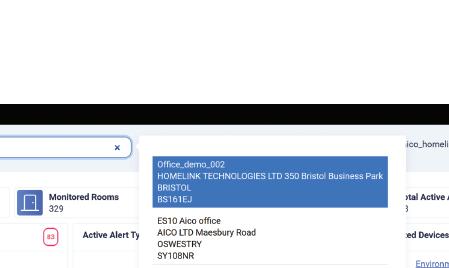






graphs and real-time alerts, enabling landlords to remain proactive and efficient in maintaining the quality of their housing stock.
HOW INTEGRATED SAFETY SOLUTIONS ENHANCE RESIDENTIAL SAFETY
to LinkedIn to share the experiences from their project to approach damp, mould, and tenant support through data. Mid Devon had been observing two households which showed no signs of structural defect, however the residing tenants disagreed. One of the households was experiencing significant social and mental health issues which impacted the condition of the property and use of ventilation. Although a PIV had been fitted, overcrowding was likely significant in the impact on humidity and mould. Effective communication with the tenants confirmed that the reduction in humidity to a healthy level came as a result of turning the heating on. After seeing the changes, tenants called in the next day to apologise and thank Mid Devon for the works, stating that they “woke up feeling like they’d won the lottery.”
BEST PRACTICES FOR SETTING UP AND MAINTAINING INTEGRATED SAFETY SYSTEMS
THE BENEFITS OF COMBINING SMOKE ALARMS AND ENVIRONMENTAL SENSORS FOR SAFETY
Implementing Internet of Things (IoT) technology, such as Aico’s HomeLINK Connected Home Solution, provides innovative home life safety far beyond home life safety. By monitoring temperature and humidity levels, environmental sensors enable the early detection of issues such as damp and mould, before they become a bigger problem. Aico’s HomeLINK Connected Home Solution combines Aico alarms with their HomeLINK technology to create an online monitoring platform to address landlords’ needs in one place, to build safer, healthier and more sustainable homes. The Ei1000G Gateway is the hub of the system which gathers data from connected devices and uploads it onto the HomeLINK Portal. The portal provides data
Multi-sensor safety systems provide broader safety coverage in both commercial and residential environments. In November 2022, SCHLOSS Roxburghe’s on-site Electrical Contractor installed Aico’s 3000 Series fire and CO alarms in their cottages, using the Ei3000MRF module to wirelessly interconnect them whilst enabling data extraction via the Ei1000G Gateway. In early 2024, SCHLOSS experienced a minor fire involving a toaster in one of the cottages. Immediately, resort staff were notified of the incident by the portal and were able to attend to the property and remedy the situation before any major damage could be done to the cottage or guests.
Another example of the HomeLINK Connected Home Solution in play is with Mid Devon Housing, who continuously use the platform to address damp and mould complaints. In October 2023, Rosie Wills, Technical Support & Repairs Manager at Mid Devon Housing, took
Aico’s HomeLINK Connected Home Solution comes together by radio frequency (RF). By installing the Ei3000MRF Module into 3000 Series alarms, the connected alarms can feed a wide range of data insights into The Gateway, remotely accessible via The Portal.
The HomeLINK Environmental Sensors (Ei1020 and Ei1025) monitor the indoor environment of each property and are both powered by a 10-year lithium battery, with RF built-in.
Installation is made easy with Aico’s SmartLINK App, which talks the user through every stage of the installation. A Gateway must be present and fully operational in the property to enable collection of data from the sensors. Aico’s Environmental Sensors can be installed in any room, although the data-collected can be room specific.
Learn more about Aico’s HomeLINK technology at www.aico.co.uk/homelink

#Alarms Save Lives
#Alarms Save Lives

#Alarms Save Lives
#Alarms Save Lives
#Alarms Save Lives
Simple and intelligent, the 3000 Series provides whole property coverage.
Simple and intelligent, the 3000 Series provides whole property coverage.
Simple and intelligent, the 3000 Series provides whole property coverage.
Simple and intelligent, the 3000 Series provides whole property coverage.
Simple and intelligent, the 3000 Series provides whole property coverage.


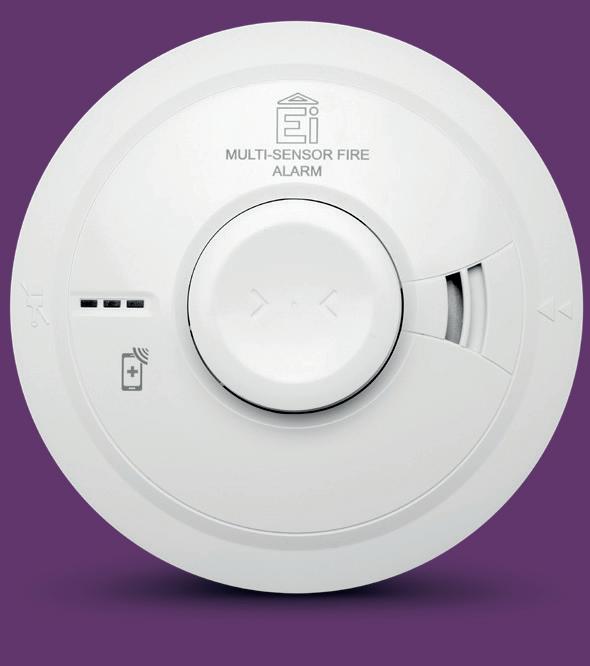



The technologically advanced 3000 Series includes both Multi-Sensor and Single-Sensor alarms, detecting Fire and Carbon Monoxide from just one range, while maintaining the simplicity that installers love.
The technologically advanced 3000 Series includes both Multi-Sensor and Single-Sensor alarms, detecting Fire and Carbon Monoxide from just one range, while maintaining the simplicity that installers love.
The technologically advanced 3000 Series includes both Multi-Sensor and Single-Sensor alarms, detecting Fire and Carbon Monoxide from just one range, while maintaining the simplicity that installers love.
Smart, connected and future-proof.
Smart, connected and future-proof.
Smart, connected and future-proof.
Smart, connected and future-proof.
Smart, connected and future-proof.
www.aico.co.uk
The technologically advanced 3000 Series includes both Multi-Sensor and Single-Sensor alarms, detecting Fire and Carbon Monoxide from just one range, while maintaining the simplicity that installers love. www.aico.co.uk
Add the Ei3000MRF for wireless interconnection and data extraction via the Ei1000G Gateway
Add the Ei3000MRF for wireless interconnection and data extraction via the Ei1000G Gateway
The technologically advanced 3000 Series includes both Multi-Sensor and Single-Sensor alarms, detecting Fire and Carbon Monoxide from just one range, while maintaining the simplicity that installers love.
Add the Ei3000MRF for wireless interconnection and data extraction via the Ei1000G Gateway
Add the Ei3000MRF for wireless interconnection and data extraction via the Ei1000G Gateway
Add the Ei3000MRF for wireless interconnection and data extraction via the Ei1000G Gateway

Milwaukee study fi nds low-quality equipment, persistent poor working practices and unmitigated risk are still putting construction workers in constant and unnecessary peril
Anew report from industry-leading manufacturer of power tools, accessories and hand tools
Milwaukee has found that risk remains unacceptably high on European construction sites, harming workers, employers and the wider sector alike.
The report, ‘Building a Safer Future,’ draws on a specially commissioned Europewide poll of 3,200 construction professionals. It identifies that only around a third (37 per cent) feel totally safe when workers are on site. This is hardly surprising in an industry long regarded as the Continent’s most dangerous.
Worker experience supports this claim, with more than half (52 per cent) of construction workers reporting at least 1-5 accidents over their careers and a notable minority of 200 respondents claiming to have had more than 10. The most common of these are working at height (50 per cent), objects falling from height (42 per cent), slips and trips (41 per cent), and faulty tools and equipment (37 per cent).
Indeed, while ‘faulty tools and equipment’ isn’t the highest-ranked risk, it’s a key factor that amplifies other top hazards like slips, trips, and falls; making it a root cause of unsafe sites that demands immediate attention.
This insecurity has helped create a worrying situation which is damaging worker health, well-being, and productivity. The impact then cascades to employers and projects, leading to delays, serious injuries, and even fatalities. Nowhere is this lack of confidence more visible than in the bad practice of ‘self-modification’ of tools, gear, and equipment which is endemic across Europe’s construction sites. Almost half of the sampled respondent (47 per cent) stated they had altered or enhanced gear they perceived as inadequate to help them do the job.
According to Adrien Piriou, Director Hand Tools, Storage & PPE EMEA at Milwaukee, “As the report states, it’s an understandable undertaking given the lack of protection people feel on-site, but an unnecessary one, especially as premium, customisable options are now mainstream. PPE, tools, and equipment

have been designed for a specific purpose and rigorously tested and certified. Once someone tampers with them, they compromise their capabilities.
“Nowhere is this more so than when it comes head protection, especially helmets where selfcustomisation effectively renders its defence redundant. Likewise, the trend for creating a ‘Swiss Army Tool’ pushes these devices beyond their original remit and capabilities, putting the user and colleagues’ physical wellbeing at higher risk from malfunction.
When asked to rank what measures could be taken to protect workers on-site, the most popular response was ‘providing better tools and equipment, with more safety functions’ (54 per cent). This was closely followed by the ‘supply of better quality and more comfortable PPE (48 per cent) and ‘increasing training and guidance around the correct use of tools on site’ (42 per cent).
The answers clearly highlight how much value workers place in the tools, equipment, and PPE they’re supplied with. Employers need to make
a reasonable investment in these products and resist buying on cost alone, not only to make site personnel feel safer but also to help them do their jobs better.
Piriou concludes:“Construction currently accounts for a fifth of Europe’s occupational fatalities, not to mention the massive number of injuries and near misses. In many cases, these accidents could have been avoided, and a key takeaway for readers should be that investing in premium tools, equipment and PPE can help reduce the probability of catastrophe.
“The workforce is a business’ most valuable commodity and choosing higher-quality, ergonomically designed and more rigorouslytested solutions will result in a safer workplace and better outcomes. As we look ahead to next year, we want to join forces across the European construction sector to affect a radical shift in procurement attitude, positioning quality over cost and build a lower-risk future for all.”
To read the full ‘Building a Safer Future’ report, visit: https://uk.milwaukeetool.eu/header/ whitepapers. For more about milwaukee, visit https://www.milwaukeetool.eu/

Whilst the Airmaster Brand by the CED Electrical Group is best known for its space heating and cooling products, it also boasts one of the Industry’s widest ventilation ranges of Extractor Fans.
We start with 4-inch and 6-inch fans designed for wall or ceiling installation. First is the (RFP) series of Timer Extractor Fans: modern slim designed units featuring low in use noise and LED indicators when on. Suitable for kitchen, bathroom or toilet, both sizes are available in white, stainless steel or chrome, whilst the 4” unit also has a glass motion sensor version finished in white.

The second (XF) 4-inch + 6-inch series comes in three standard voltage versions – a basic fan, a pull cord option and a timer model, plus double
ESP has invested significantly to introduce a new name to the fire and safety alarm sector with the launch of Espire, a range of high performance fire and CO alarm products. Sitting as a separate brand under ESP’s portfolio, Espire is supported by Scolmore Group, distributed by ESP.
The Espire fire and safety alarms are suitable for Grade D1, Grade D2 and Grade F1 installations. The range comprisesof optical smoke alarms, heat alarms, smoke and heat alarms, carbon monoxide (CO) alarms, and CO and heat alarms. The range offers several pioneering features: auto-dimming power LED, stainless steel insect mesh barrier, RF Link,
insulated versions of both. Separate brown or white fan grills are available for this series.
Completing the ceiling/wall extractor fan range are the(XFE) Low voltage 12v double insulated Safety Fans, with or without separate Controller and designed for fitting within 0.6m of a bath or shower, where current regulations prevent the use of conventional fans.
And finally the Airmaster range concludes with complete 4” In-line shower Extractor Fan Kits, either Standard or complete with Timer, Centrifugal Extractor fans plus 4-inch & 6-inch pvc or aluminium ducting.
Further information please call 0208 503 8500. www.cedelectrical.co.uk.

E-Lite – the new power switchable linear batten from Ovia
Introducing E-Lite, a new Power Switchable Linear Batten that is designed to deliver superior performance, flexibility, and ease of installation.
Available in Microwave Sensor, Emergency, and Microwave Sensor & Emergency versions, the E-Lite operates at an impressive 120lm/W.The E-Lite is available in two varied sizes and wattage combinations: 1,200mm (15-30W) and 1,500mm (23-40W).

The luminaire offers a range of features and benefits to enhance the installation process and its performance:
• Piano key terminal for easy wiring and quick installation.
• 600mm fixing centres allowing retro fit of many batten brands.
• Power switchable to allow the installer to change the wattage.
• Adjustable CCT to suit any environment (3,000k, 4,000k, 6,000k).
• Option to be surface mounted, mounted with a BESA box, or suspended
• IP44 Rating (ceiling mounted)
• Self-Test Emergency to remove the need of manual testing
• Security screw caps (3mm allen key)
• Optional microwave sensor available, offering variable detection area adjustment, hold time, daylight threshold, and a corridor function.
• Optional emergency converter pack with three-hour lifespan.
The modular design enhances product sustainability as microwave sensors and emergency packs can be retrofitted in-house by distributors or contractors, without the need for tools. Clear markings on the gear tray guide installation, with easy wiring via colour-coded connectors.
The E-Lite comes with an industry-leading five-year warranty. Watch the video here - https://youtu.be/MIzNoH5Vu-0 www.oviauk.com

lock-in base, responsive thermistor and 24-hour memory function.
All Espire products have undergone a meticulous design, development and manufacturing process at the factory. All alarms have been tested by third party test houses and certified by LPCB (Loss Prevention Certification Board) and TUV, to meet the relevant product standards – BS EN 14604 for smoke alarms: BS 5446-2 for heat alarms and BS EN 50291-1 for CO alarms. All products come with a five-year warranty. Watch the video - https://www.youtube.com/ watch?v=a4CSgDAIIVw
www.espireuk.com
Securing connections with Unicrimp’s new conduit accessories
Unicrimp, part of the Scolmore Group of companies, continues to invest in its comprehensive range of cable accessories and has just added a brand new collection of Conduit Accessories to its Q-Crimp portfolio.
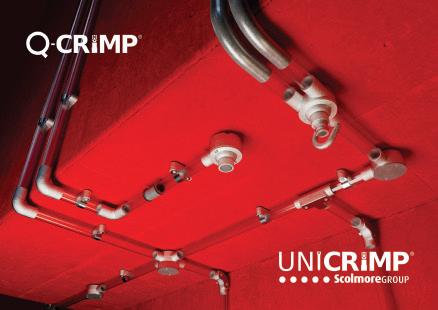
The extensive Conduit Accessories range comprises more than 90 individual products in total, with key products including Conduit Boxes, Light Gauge Saddles, Inspection Tees, Inspection Bends, and Metal Hooks.
The range has been designed to offer essential solutions for ensuring the proper functioning, safety, and efficiency of electrical conduit systems.The durability, ease of installation, and protective features of these accessories make them indispensable across electrical installations in residential, commercial, and industrial environments.
Conduit Boxes - also known as BESA boxes - are designed to protect and route electrical cables within building structures.The new range includes 20mm and 25mm 1 Way, 2 Way, 3 Way, and 4 Way Conduit Boxes, available in a variety of Angled,Tangent,‘U’,‘Y’, and ‘H’ shape configurations.
Light Gauge Saddles (20mm and 25mm) are designed to wrap securely around conduits, providing precise support and organisation that simplifies upgrades and maintenance. Featuring a BZP (bright zinc plated) coating, these saddles are resistant to rust and oxidation, ensuring longterm durability.They are available in 20mm and 25mm sizes.
Inspection Tees (20mm and 25mm) create a three-way junction with a window for easy cable checking and access.
Inspection Bends (20mm and 25mm) allow you to join two pieces of conduit tube for changes in direction (usually 90° or 45° angles) with an inspection window to check / access cables.
Metal Hooks - diecast screwed metal hooks are included in the range for suspending cables or light fittings.
The new Conduit Accessories range and this can be downloaded from the Unicrimp website as well as from the Scolmore Group app. Watch the video here – https://www.youtube.com/watch?v=5YotaXCcanI www.unicrimp.com
construction workers’ habits when it comes to caring for their

As part of their latest study, MyWorkwear has delved into the cleanliness of uniforms worn by UK professionals to determine how often they clean and replace items alongside their general opinions of their workwear. According to the study, one in six construction workers only replace their workwear once per year.
Considering the findings, MyWorkwear has also offered their expert guidance on how often workwear should be washed and replaced.
BELOW
When asked how often they clean items such as trousers, a third (33 per cent) state once per week compared to 7 per cent who state a couple of times per month. Looking at tops such as work t-shirts, 24 per cent wash them once per week, with 5 per cent only washing them a few times per month.
Delving further into items such as overalls, almost a quarter (24 per cent) wash them once per week whereas 10 per cent wash them
a few times per month. For items such as work gilets, jackets and fleeces, 30 per cent wash them once per week compared to 10 per cent who wash them a few times per month.
Questioning workers about their reasons for cleaning their workwear, 10 per cent expressed that their employer requires them to. However, when asked how often they replace their workwear, 15 per cent only replace items once per year whereas 22 per cent replace items once every two months.
Analysing their opinions on their workwear, positively over two-fifths (4 per cent) are happy with their workwear but 23 per cent expressed that they’d like to change the items as they’re too tight fitting and 10 per cent believe the items don’t compliment or suit different heights and body frames.
HOW OFTEN SHOULD WORKWEAR BE WASHED THOROUGHLY AND WHY?
It’s dependent on the items and as per the instructions and hygiene requirements of individuals. It’s also dependent on the environment in which the items are being used,
for example, those on-site would need to wash items more regularly due to dirt build up. Wash under layers more often than outer layers and replace once stains can no longer be washed out therefore impacting brand image. It’s also important that all branded layers are washed regularly so that branding is always on show regardless of weather conditions. For instance, if it suddenly starts to rain, have a clean branded coat available.
HOW OFTEN SHOULD WORKWEAR BE REPLACED WITH NEW ITEMS AND WHY?
Sustainability should be a priority, with higherquality items recommended to reduce the need for frequent replacements due to wear and tear. Also consider product types for example, wicking products for sweat reduction when working in warmer conditions.
Items should also be replaced when new branding is needed, such as during rebrands or when staff change departments and require different personalisation. Additionally, replacements are necessary when safety is compromised, such as damage or staining to hi-vis gear.
Other factors to consider for workwear upkeep include following care instructions, providing spare uniforms in case of damage, and ensuring the right garments are worn for the job—such as insulated, waterproof coats for on-site work and appropriate PPE.
For further insight into maintaining workwear, please visit: https://www. myworkwear.co.uk/company/ what-is-the-best-way-to-maintain-workwear/
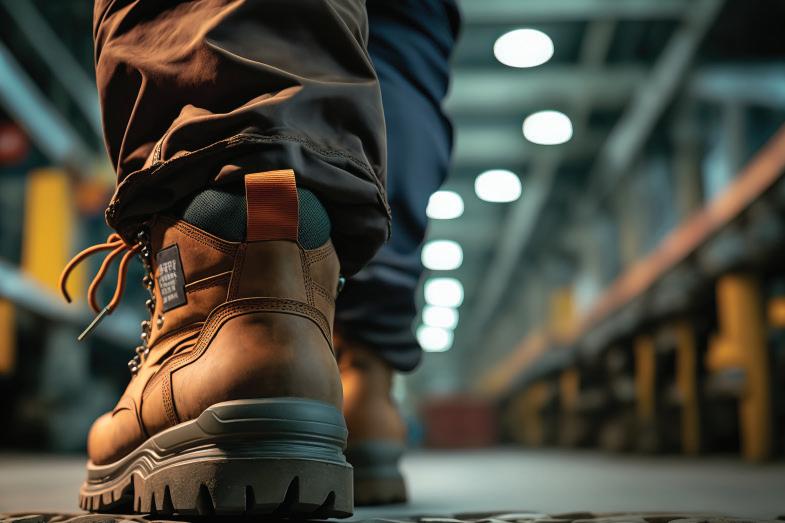












































Save space in your heat pump installation with our unique two-module Type B HP RCD







Specialists in circuit protection
UK stock
Next-day delivery
The safest way to use electricity.






